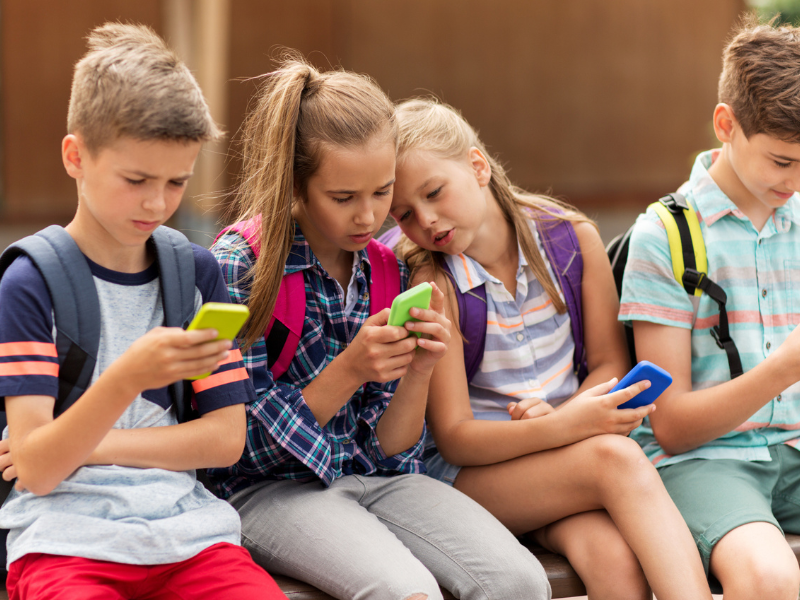The omnipresence of cellphones – especially in schools – is wreaking havoc on young people.
A survey by Common Sense Census reveals that as of 2021, 43% of 8-to-12-year-olds own a smartphone, as do 88% of teens 13 to 18. The analysis also informs us that:
-The average teen spends a mind-boggling 8 hours and 39 minutes each day using electronic media.
-Half of teenagers feel addicted to their phones.
-78% check them hourly or more.
-Of those who have cellphones, 97% of teens report using them during the school day, mostly for nonacademic purposes.
This is anything but a new problem, however.The nation’s teachers have been competing with smartphones for years. A 2010 Pew Research Center study found that 90% of U.S. schools had some sort of smartphone ban. Of the teens surveyed,
-62% said they could have their phones in school but not in class.
-24% were not allowed to have phones on school grounds.
-Of those who attended a school with a total ban, 65% brought their phones to school anyway.
-While in class, 64% of teens said they had texted, and 25% had made or received a call.
The damage
The Program for International Student Assessment (PISA), a test conducted by the Organization for Economic Co-operation and Development in almost 80 countries every three years, tests 15-year-olds in math, reading, and science. The scores have been sinking over the years for a variety of reasons. Of late, COVID was a big factor. However, PISA has found a more ominous reason for the decline in scores: student smartphone usage.
PISA finds that students who spend less than one hour of “leisure” time on digital devices a day at school scored about 50 points higher in math than students whose eyes are glued to their screens more than five hours a day. In a comprehensive piece in The Atlantic, Derek Thompsonnotes that the gap held even after adjusting for socioeconomic factors. He also discloses, “For comparison, a 50-point decline in math scores is about four times larger than America’s pandemic-era learning loss in that subject.”
Cellphone screens also create a general distraction, even for students who aren’t always looking at them. Andreas Schleicher, the director of the PISA survey, maintains that students who reported feeling distracted by their classmates’ digital habits scored lower in math. Additionally, 45% of students said that they felt “nervous” or “anxious” when they didn’t have their digital devices near them.
In sum, students who spend more time involved with their phones do worse in school, distract other students, and feel worse about their lives.
Furthermore, smartphone usage prevents socialization among students during the school day. Addictive relationships are also associated with mobile devices, as well as mental health problems, including depression, anxiety, and disrupted sleep. As Great Schools explains, “Neuroscience tells us that tweens’ and teens’ developing brains make them especially vulnerable to both addiction and mental health crises.”
Play and exercise are also affected by the use of electronics. A Danish study published in 2021 revealed that a four-week ban on phones during recess significantly increased both the frequency and intensity of physical activity of children aged 10–14.
Also, in a 2016 study of nearly 25,000 U.S. teenagers, about 20% used screened devices (smartphones, tablets, or video games) more than five hours per day. That group was 43% more likely to be obese than participants who experienced less screen time.
What can schools do?





